Mega Archive: Part XXXII: From Ultraman to Snow Bros.
By Mento 2 Comments
It's New Zelda Week and what better way to honor Nintendo's efforts than by talking about decades-old games released on the system of their greatest rival? We're back with the next entry of the Mega Archive: a chronological look at the games released on the Sega Mega Drive/Genesis as their Giant Bomb Wiki pages are simultaneously polished up by this schlub over here. I'm still not entirely sure what's in store for our Wiki now that it dwells beneath the monolithic auspices of Fandom Incorporated, but it wouldn't hurt it to be a little more complete before the clandestine Council of Fandom Elders decide whether or not to pull the plug, right? If they spare it, you can thank me (if they don't, you can blame someone else. I love how that works). Either way, it's gratifying enough to learn more about a console and its library that largely slipped me by, even if Sturgeon's law is starting to hit the poor ol' Genesis pretty hard in its middle-age here.
It's pure serendipity that we're following the Mega Drive's May 1993 release schedule exactly thirty years later, but this synchronicity sadly won't last; we'll need at least six entries to cover the busy November-December holiday period alone. For now, though, we can sit back with our modern Zeldas and Jedi Survivors and whatnot this month and marvel at the crap Sega fans had to settle for back then. And boy howdy do I have some crap for you this week: four sports games, two licensed games, and a bad case of the crabs. Couple of highlights too, though, so it's not a total wash. Let's get into it.
But first! A table of past entries I really need to clean up:
Part I: 001-020 (Oct '88 - Dec '89) | Part II: 021-035 (Dec '89 - Mar '90) | Part III: 036-050 (Apr '90 - Jul '90) |
| Part IV: 051-065 (Aug '90 - Oct '90) | Part V: 066-080 (Oct '90 - Dec '90) | Part VI: 081-098 (Dec '90) |
Part VII: 099-115 (Jan '91 - Mar '91) | Part VIII: 116-130 (Mar '91 - Apr '91) | Part IX: 131-145 (May '91 - Jun '91) |
Part X: 146-160 (Jun '91 - Jul '91) | Part XI: 161-175 (Jul '91 - Aug '91) | Part XII: 176-190 (Aug '91 - Sep '91) |
Part XIII: 191-205 (Oct '91 - Nov '91) | Part XIV: 206-220 (Nov '91) | Part XV: 221-240 (Dec '91) |
Part XVI: 241-255 (Jan '92 - Feb '92) | Part XVII: 256-270 (Mar '92 - Apr '92) | Part XVIII: 271-285 (Apr '92 - Jun '92) |
Part XIX: 286-300 (Jul '92 - Aug '92) | Part XX: 301-310 (Aug '92 - Sep '92) | Part XXI: 311-320 (Sep '92 - Oct '92) |
Part XXII: 321-330 (Oct '92) | Part XXIII: 331-340 (Oct '92 - Nov '92) | Part XXIV: 341-350 (Nov '92 - Dec '92) |
Part XXV: 351-360 (Dec '92) | Part XXVI: 361-370 (Dec '92) | Part XXVII: 371-381 (Dec '92) |
Part XXVIII: 382-390 (Jan '93 - Feb '93) | Part XXIX: 391-400 (Feb '93) | Part XXX: 401-410 (Mar '93) |
| Part XXXI: 411-420 (Mar '93 - Apr '93) | Part XXXII: 421-430 (Apr '93 - May '93) | Part XXXIII: 431-440 (???) |
| Part XXXV: 441-450 (???) | Part XXXVI: 451-460 (???) | Part XXXVII: 461-470 (???) |
Part XXXII: 421-430 (April '93 - May '93)
421: Ultraman
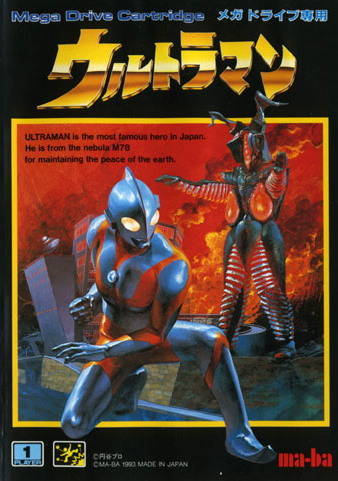
- Developer: Human Entertainment
- Publisher: Ma-Ba
- JP Release: 1993-04-09
- NA Release: N/A
- EU Release: N/A
- Franchise: Ultraman
- Genre: Fighter
- Theme: Justice
- Premise: The galactic superhero Ultraman has arrived on the Mega Drive, doing his usual schtick of getting real big for minutes at a time. I'm sure I've heard a podcast ad or two promising something similar.
- Availability: A variation of this game was released on SNES overseas, but otherwise there's not a whole lot of localized Ultraman out there.
- Preservation: This one-on-one single-player fighter game for the hugely popular Ultraman TV show license was originally released in arcades by Bandai back in 1991 with the SNES port following soon after, but it took another two years to make the same leap to the Mega Drive. As such, its already modest charms become even more modest with a two year gap during which the genre improved leaps and bounds (including the arrival of Street Fighter II in the summer of '92, the Special Edition of which would arrive on Mega Drive a matter of months after this game). Sources contribute this delay to some sort of dispute Sega was having with Bandai at the time; we actually haven't seen a single Bandai-published game yet for Mega Drive, though there's been a few from its subsidiaries. Speaking of which, we last encountered Ma-Ba with Kidou Keisatsu Patlabor: 98-Shiki Kidou Seyo! [MA XXII]; if you recall, they were a short-lived collaboration between transpacific toy giants Mattel and Bandai, originally established to sell Barbie to Japan. Like a fellow family-friendly license, Doraemon, Ultraman's presence on the Mega Drive was limited to a single game but instead saw many adaptations for the kid-focused Sega Pico. Human's involvement makes me wonder if they wouldn't have preferred making a FirePro Wrestling game with Ultraman characters instead but maybe they weren't allowed (too bad, really).
- Wiki Notes: SNES double-dip, so just some screenshots.
422: Ball Jacks
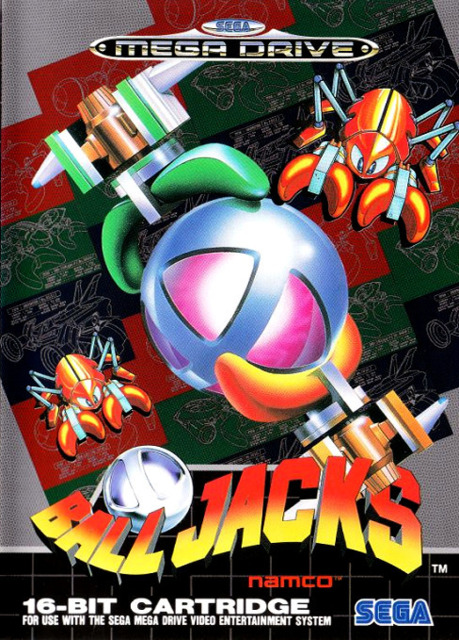
- Developer: Namco
- Publisher: Namco
- JP Release: 1993-04-23
- NA Release: N/A
- EU Release: November 1993
- Franchise: N/A
- Genre: Action / Future Sports
- Theme: Pandemonium
- Premise: Two robotic crabs side-walk into the ball-grabbing arena, but only one side-walks out.
- Availability: Nope. Exclusive to the Japanese and European Mega Drive.
- Preservation: Normally, a system-exclusive Namco game gracing the Mega Drive would be cause for celebration. Doubly so if it's one that released in Europe but not the States, as I have a fondness for that rare scenario. Yet, I'm struggling to understand who this game is for: there's a frantic competitive two-player aspect to it and it almost resembles a real-life board game similar to Hungry, Hungry Hippos as the goal is to use a claw-like device to quickly snatch and hoard marbles. Grabbing an opponent's balls causes them damage (not like that) if they should collide with them en route to your side, so often the play is to use both pincers and try to smack your opponent with their own balls until they get destroyed and are temporarily removed from the game with the ultimate aim to have all the balls in your court. As you might expect, games descend into a chaotic, messy free-for-all pretty rapidly that makes the single-player in particular too aggravating to deal with. Doesn't help that the big sprites gives you very little room to work with. I'd be curious to see if, in a match between two equally skilled players, it doesn't become something closer to a Windjammers but I suspect it's not nearly complex enough to be entertaining even as a spectator sport. What an odd thing. Looking forward to @jeffrud covering it for NamCompendium at least, maybe he can make more sense of it.
- Wiki Notes: Just needed some body text. I tried not to make as many allusions to clutching testicles, since our Wiki is a semi-professional joint.
423: J.League Pro Striker
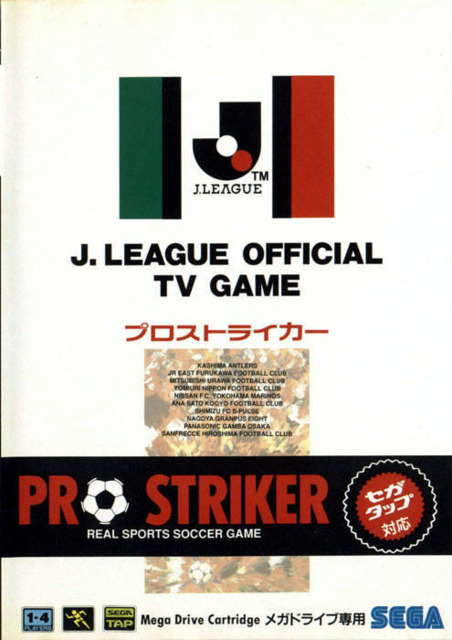
- Developer: Sega
- Publisher: Sega
- JP Release: 1993-04-23
- NA Release: N/A
- EU Release: N/A
- Franchise: J.League Pro Striker
- Genre: Soccer
- Theme: Soccer
- Premise: Soccer
- Availability: Just play a modern FIFA, they usually include the J.League.
- Preservation: Of all the sports that exist, none are more internationally popular than soccer and Japan celebrated their growing attraction to the sport by creating the J.League in 1992: the top tier contest, equivalent to the UK Premier League, with teams that would compete against each other round-robin style for an entire season. Back then there were only ten participating teams so the game's going to feel a little light on content, but Sega wanted in on the ground floor of this new organization and chose to put their own fully licensed and endorsed J.League franchise together. They would only stick with the Pro Striker (which I keep wanting to spell as Pro Skater, force of habit) brand until 1995, switching it up with alternatives like Victory Goal for Saturn and The J.League 1994 for arcades. Maybe also worth noting that this wasn't the first J.League branded game for Mega Drive: that would be J.League Championship Soccer [MA XIX], a localized port of a British soccer game with the J.League shoehorned in.
- Wiki Notes: A whole new page from scratch. Been a while. Surprising too, given it's a first-party game.
424: Al Michaels Announces HardBall III
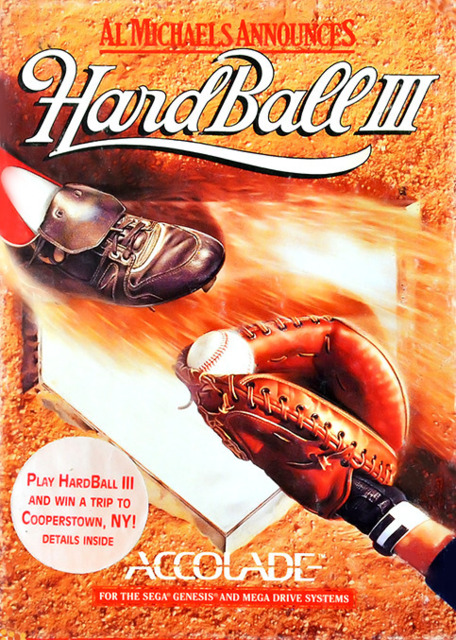
- Developer: MindSpan
- Publisher: Accolade
- JP Release: N/A
- NA Release: 1993
- EU Release: May 1993
- Franchise: HardBall
- Genre: Baseball
- Theme: Baseball
- Premise: Baseball
- Availability: You could maybe buy this from a collector, but only after playing hardball with them.
- Preservation: HardBall is Accolade's baseball franchise which originally belonged in the domain of home computers, perhaps explaining its more simulation-heavy bent. The first HardBall we covered way back [MA IX] but the second HardBall skipped consoles entirely. For whatever reason (I'm guessing financial) long-time ABC sportscaster Al Michaels decided to throw his name into the title, though only for the Genesis version: the other ports, including SNES, went without his blessing. Accolade and Sega were still having their little spat regarding Accolade's illegal manufacture of Mega Drive carts (a precautionary measure to prevent another Game Crash of 1983) so it's possible this is another unlicensed game of theirs, much like the first Genesis HardBall was, though I've seen suggestions the lawsuit was resolved and it was given its license shortly before it came out. We'll see Accolade pair up with their frequent contract partners MindSpan again just a little further down this same Mega Archive entry. (Shout out to @borgmaster; I think he had to suffer through a HardBall recently too.)
- Wiki Notes: SNES double-dip, so screenshots and releases.
425: Dinosaurs for Hire
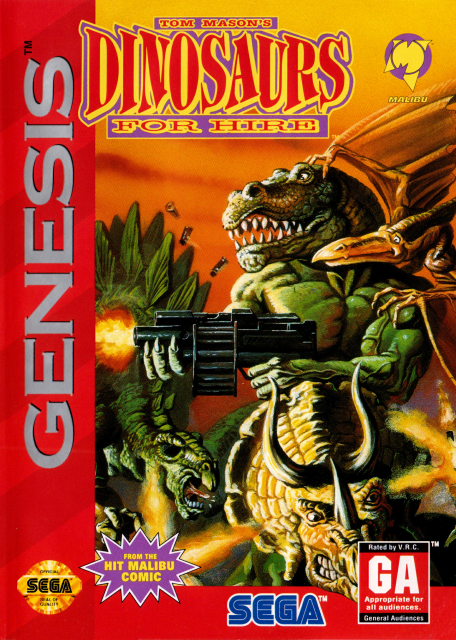
- Developer: Sega InterActive
- Publisher: Sega
- JP Release: N/A
- NA Release: May 1993
- EU Release: N/A
- Franchise: Dinosaurs for Hire
- Genre: Run-and-gun-and-thun(der lizards)
- Theme: "The guys who made TMNT sure got rich and famous quick, huh?"
- Premise: If you needed a dirty job done quick, no questions asked, why not hire three dinosaurs with guns? Probably several reasons why not, right?
- Availability: No longer for hire. Or purchase.
- Preservation: To be a child in the late '80s and early '90s was to be constantly inundated with various anthro superheroes, each more radical to the max than the last. This trend was of course kicked off by a certain pack of adolescent altered assassin amphibians but it might be hard for those that didn't live through those times to reconcile with just how many copycats (albeit not always cats) followed in their sewer water wake. Dinosaurs for Hire was a 1988 comic book by Tom Mason and published through Eternity Comics (later Malibu Comics, whom we've met before with the Ex-Mutants [MA XXVI]) and featured three wisecracking and gun-toting dinosaurs named Archie (a t-rex), Lorenzo (a triceratops), and Reese (a stegosaurus) along with their support pal Cyrano (a pteradon). The backstory, which the comics sparingly go into, is that the three are actually aliens that crash-land on Earth and decide to take on mercenary work to pay the rent. The game was the only other multimedia product that resulted from this franchise after a Fox Kids animated show fell through: despite the bigger audience for any dinosaur-related media following 1993's Jurassic Park, it sounds like the author and TV executives couldn't come to terms on a tone with the latter wanting a TMNT type show that was more lighthearted and goofy. Always a shame when people take their action hero dinosaur characters a little too seriously. And hey, a warm welcome to a new (sorta) Sega first-party studio: Sega InterActive. Sega of America decided it needed to bulk up its output of western releases and went out and acquired Interactive Designs, whom you might recall being the developers of tie-in games TaleSpin [MA XXIII] and Greendog: The Beached Surfer Dude! [MA XXI]. Sega InterActive largely kept to the same licensed game beat for its brief existence, occasionally helping Sega with other projects like the 8-bit ports of Sonic Spinball and the 32X port of Sega's Star Wars Arcade. They are perhaps best known for Eternal Champions, Sega's homegrown pretender to the Mortal Kombat/Street Fighter II throne, which we'll encounter towards the end of 1993. (Man, I spent this whole paragraph on the history and nothing on the game itself. It's like a so-so Contra: Hard Corps? There you go.)
- Wiki Notes: It could probably use more body text, but what little is there made me smile so I just left it. Added some screenshots and a header instead.
426: Super Kick Off
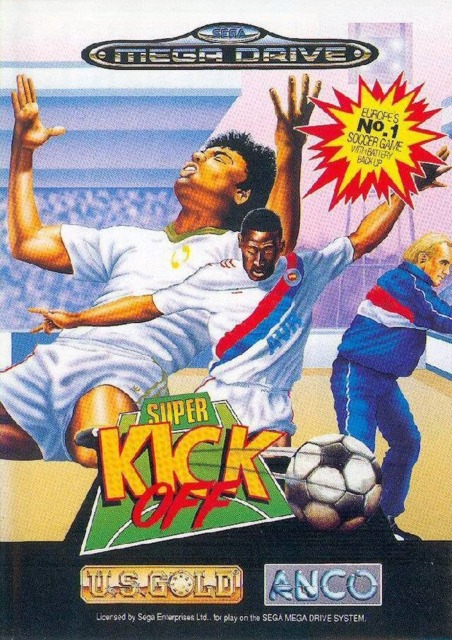
- Developer: Tiertex
- Publisher: US Gold
- JP Release: N/A
- NA Release: N/A
- EU Release: May 1993
- Franchise: Kick Off
- Genre: Soccer
- Theme: Soccer
- Premise: Soccer
- Availability: Nope. Both original creators Anco and the Kick Off franchise as a whole got red carded into the great beyond twenty years ago.
- Preservation: Two soccer games in one update. Welcome to early summer, I suppose. Of the many UK-made soccer franchises developed for the weird home computers we were all so fond of, few had the pedigree of Anco's Kick Off save perhaps Sensible Soccer and EA's later FIFA. Euros couldn't get enough of its semi-realistic take on the sport where the ball never stuck to the player's feet but instead reacted like the indifferent orb it was, requiring a greater level of player skill to maintain control. For its console debut, where it received the compulsory "Super" to its title, the developers slowed down the action while making the controls more conducive to a gamepad user. The two 16-bit versions, for Mega Drive and SNES, had a few differences due to being ported by separate developers but largely retained what made the original popular. In theory, at least, since I can't tell any of these soccer games apart. It's another rare Mega Drive PAL exclusive, if that means anything.
- Wiki Notes: SNES double-dip, so screenshots and releases.
427: Summer Challenge
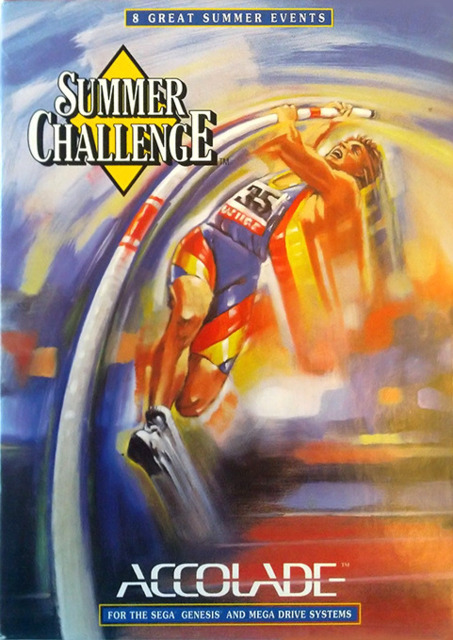
- Developer: MindSpan
- Publisher: Accolade
- JP Release: N/A
- NA Release: May 1993
- EU Release: 1993-05-26
- Franchise: N/A
- Genre: Sports
- Theme: Global unity and brotherhood through competing doping scandals
- Premise: Accolade's over here making their own Olympics with blackjack and hookers
- Availability: Nope. No-one's carrying a torch for this old game.
- Preservation: Told ya MindSpan and Accolade would be back, and here they are producing this unlicensed (briefly) Genesis Olympics game. The Olympics connection is also unlicensed, hence the generic title. You might be wondering why this hit the summer of 1993 instead of 1992 when there was an actual Summer Olympics happening, but I guess it took them a year to get around to porting over the 1992 DOS original. Maybe they hoped people were still jonesing for pole vaults and pentathlons a year later? Anyway, yeah, typical Track & Field sort of button-mashing sports mini-game collection of the like most Olympics branded stuff falls under, notable only really for its early use of fake 3D, the odd timing behind its release, and that Accolade were still surreptitiously putting out these unlicensed games under Sega's noses.
- Wiki Notes: Needed everything besides screenshots.
428: Ranger-X / Ex-Ranza
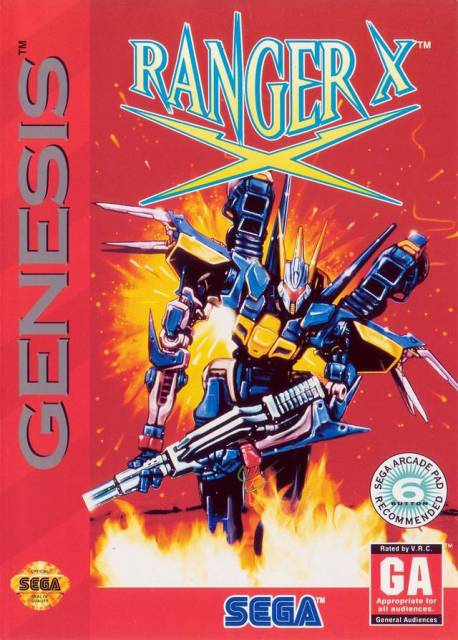
- Developer: Gau Entertainment
- Publisher: Sega
- JP Release: 1993-05-28 (as Ex-Ranza)
- NA Release: 1993 (as Ranger-X)
- EU Release: August 1993 (as Ranger-X)
- Franchise: N/A
- Genre: Mech Shooter
- Theme: Saving the day in a big metal suit
- Premise: The Rahuna have invaded the peaceful Homeworld and only an experimental exosuit can push back their advance and defeat the bad Rahuna's big kahuna.
- Availability: Never been rereleased, sadly.
- Preservation: Ah, here we go, a game that doesn't suck. Ranger-X, much like the thematically similar Target Earth, is a mech game that has you running and gunning across levels while occasionally making use of vehicles and other modes. You wouldn't have thought a mech suit would need a motorcycle, but in a way it kinda does. Ranger-X is able to leverage the system's technical strengths to create a series of spectacles, enhanced further by the amount of action happening at any given moment. It does make the game a bit on the tougher side, as shooters tend to be when there's a lot to focus on, but I imagine its diehard fans (as opposed to the die easy fans) appreciate that level of challenge. The game was the first, and sadly last, game developed by Gau Entertainment, which was founded by former Wolf Team staff (Wolf Team, of course, having developed many of their own mecha shooters for Mega Drive like Final Zone and Granada). Shortly after Ranger-X's release Gau were bought by Nex Entertainment and the two together became Nextech. Though busier on the Sega Saturn, where they handled the Battle Arena Toshinden and Resident Evil ports among others, we'll still see Nextech's name a couple more times on Mega Archive including next to one of my favorite Mega Drive games.
- Wiki Notes: Basically no work required. This is a well-loved game.
429: Taikou Risshiden
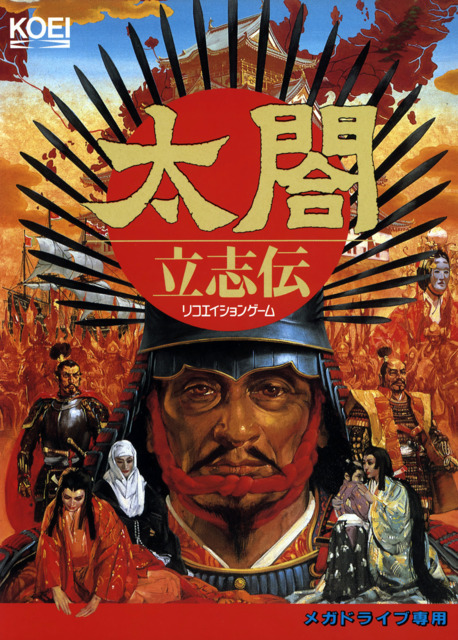
- Developer: Koei
- Publisher: Koei
- JP Release: 1993-05-28
- NA Release: N/A
- EU Release: N/A
- Franchise: Taikou Risshiden
- Genre: Simulation
- Theme: Not Dying in Feudal Japan
- Premise: Do you have what it takes to survive the tumultuous Sengoku era as a rank-and-file samurai? What about a simple merchant? How about if you got isekai'd there somehow and were given a powerful cheat sk- wait, I don't think that was an option.
- Availability: Oddly enough, many of Koei's early strategy games have recently found themselves on Steam including this one. They're in Japanese, but they're there all the same.
- Preservation: Did anyone say "dry Sengoku sim from Koei"? Because that's how you summon Taikou Risshiden into being from the darkest corner of the Dull Dimension. The big departure from the Nobunaga's Ambition series (which are the more famous Sengoku era Koei games) is that it takes the conflict from a macro level of controlling a whole prefecture to the relatively micro, managing a protagonist with a variety of roles and their followers. It's sort of like Uncharted Waters (another Koei joint) in that you're just trying to make a living in a chaotic world, and ideally live through the final years of the Warring States period. By the by, its name means "Taikou's Success Story", Taikou being a nickname of major late-Sengoku figure (and eventual Emperor) Hideyoshi Toyotomi. The second Taikou Risshiden would release on PC, PlayStation, and Saturn so we won't be seeing this franchise again. Many more other Koei strategy games to come though. I'm all tenterhooks over here.
- Wiki Notes: SNES double-dip, so just some screenshots.
430: Snow Bros.: Nick & Tom

- Developer: Toaplan
- Publisher: Tengen
- JP Release: 1993-05-28
- NA Release: N/A
- EU Release: N/A
- Franchise: Snow Bros.
- Genre: Platformer
- Theme: Doing snowballs with your best bud. I just should've just said "making" there. "Making" would've been so much better.
- Premise: In steamy 1980s Miami, the Moreno Twins take over the criminal underworld by cornering the cocaine market using connections to the South American drug cartels forged during their years as mercenaries. This... is not their story. This is instead a cutesy platformer about snowmen.
- Availability: It's on the Japanese Sega Mega Drive Mini if you felt like importing one. Otherwise there's the Snow Bros. Special remake which released last year (2022) on Switch.
- Preservation: Toaplan were well known for their many shoot 'em ups in the arcade and on Mega Drive, but that wasn't their only field of expertise—they could also rip off Bubble Bobble if they felt like it. Hence, we have Snow Bros., a single-screen platformer about a couple of color-coded brothers trapping monsters with their big, wet spheres (lotta ball talk this week...). In Snow Bros.'s case, however, those spheres are snowballs rather than bubbles. Once an enemy has been stunned by a snowball, Nick and Tom (the titular Snow Bros.) can then start rolling them around causing collateral damage to any enemies in their path. There were a few home console ports but the Mega Drive one perhaps stands as the most faithful, due to Toaplan themselves being the developers. As a bonus, Toaplan also expanded the game by adding twenty post-game levels to the original fifty in which the princesses the Snow Bros. are out to save then have to save their rescuers in a female-empowering role-reversal.
- Wiki Notes: Power user Nes got here before me, so the main body was nice and fleshed out. Beyond that, just a box art image and a release.
